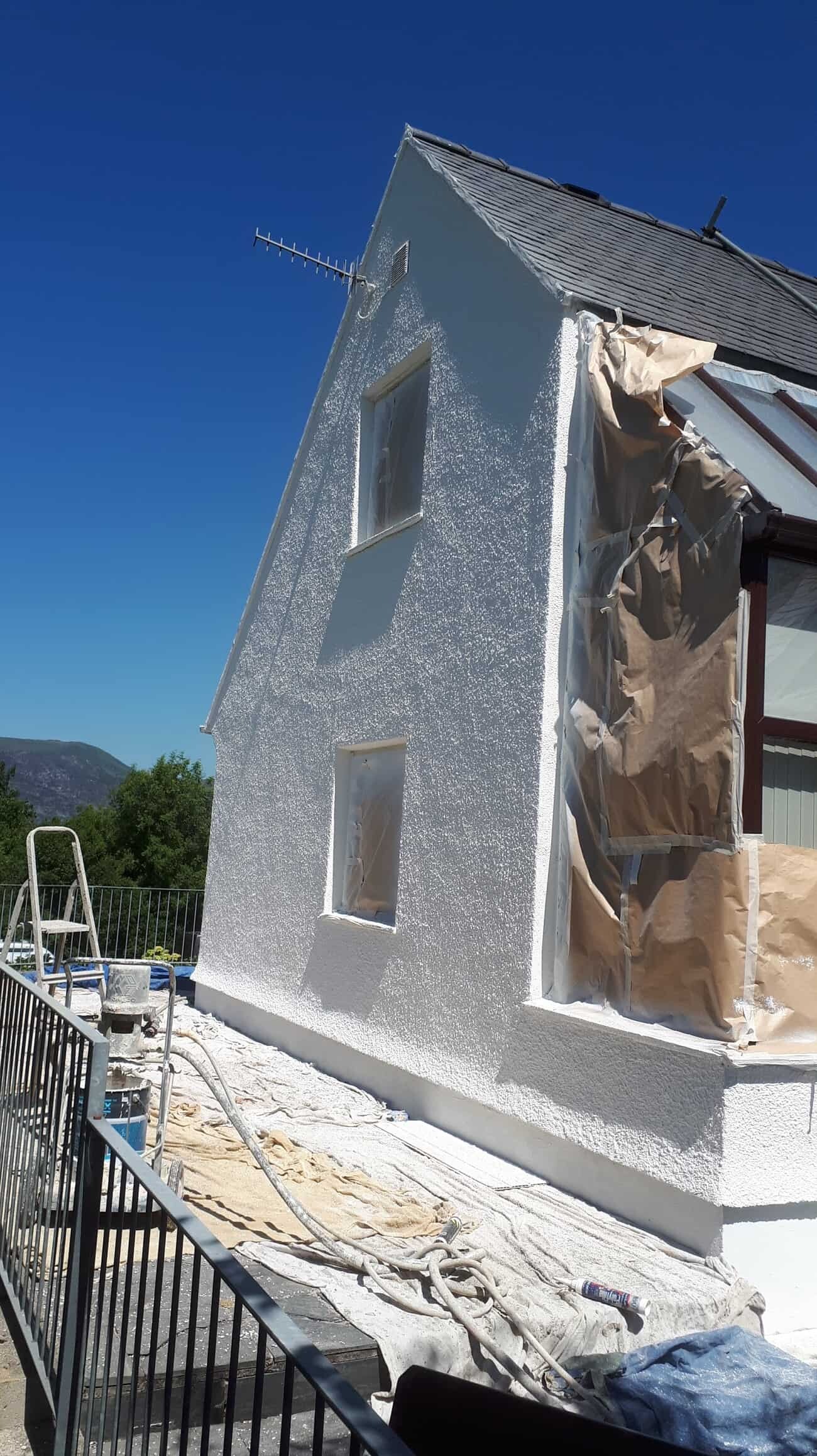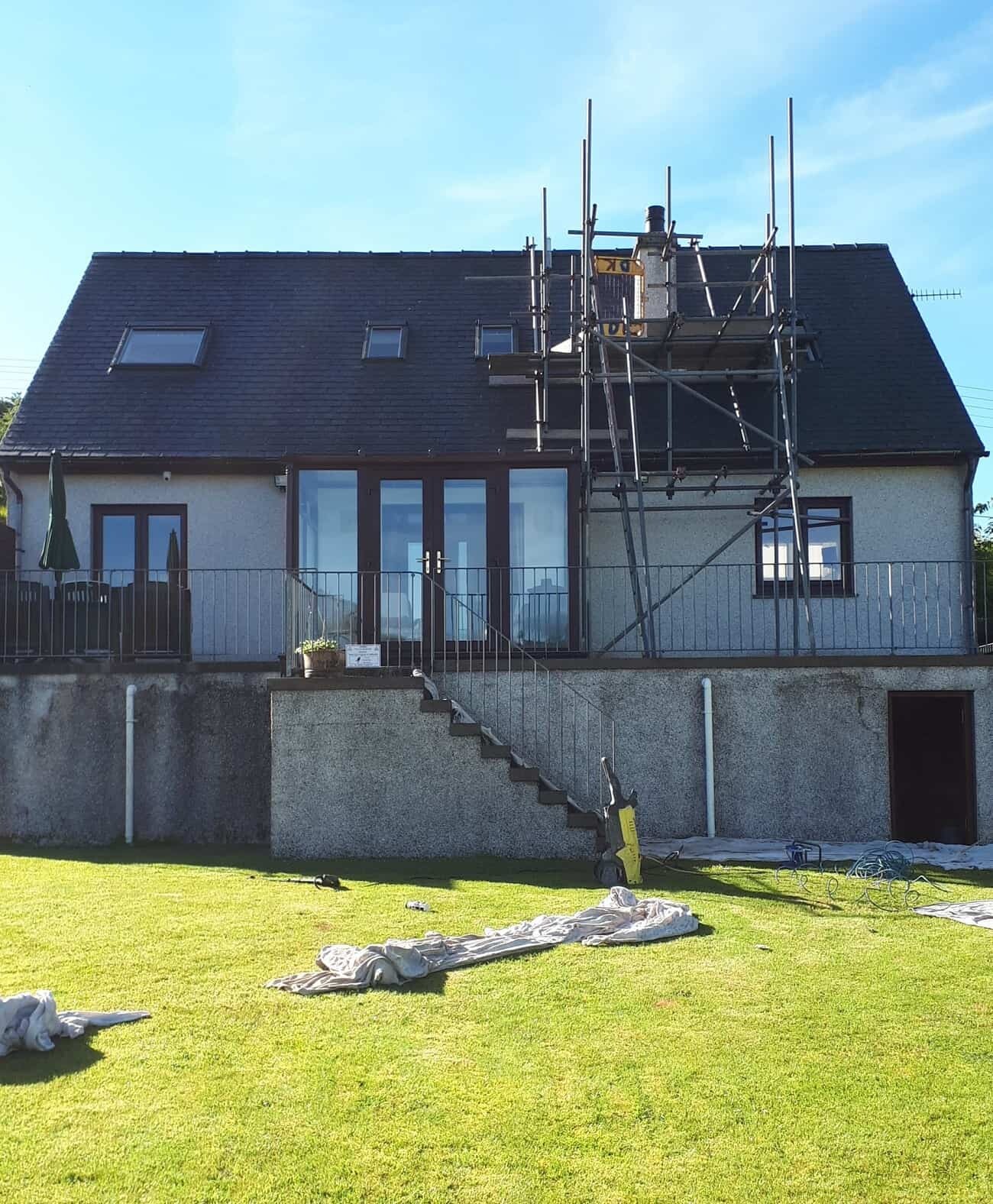Just as the health experts advise us to wear sun cream out in the hot sun, and to protect our skin, those UV rays can also do damage to the outside of your house.
Houses are generally built to withstand most temperature variations according to the typical weather in the country where they are built, but what about when we get unusual weather, like when a rare heatwave sweeps across Britain?
Most houses in Northern Europe, Britain especially, are designed to keep warm during our cold winters, and also to stay dry and keep the rain and the damp out, but what about when that simple system breaks down, what do you do then?
Your home should have weather protection, just like we have sun cream in the hot weather.
Just as the typical sun cream will only last a few hours before re-application, the paint on the outside of your house also gets worn away from the constant hot sun, and it dries out, and then starts peeling and cracking.
In fact the sun can dry it out to such an extent, the paint literally turns to powder.
The sun is accelerating the paint deterioration on your walls
Normal masonry paint is only ever designed to last a certain amount of years, in fact masonry paints start to break down even after the first winter they are in-situ on your walls.
This is us working on the outside of a house on a scorching day

The problem with paint is that it ages quickly, after all, if paint lasted for ever, the huge multinational companies who make paint, would not make as much money, so they clever people at the paint factories make sure they know that you will be back again in under 2 years to buy more.
When patches of flaking paint appear on your home, like for example the house above, you cannot just paint over them and expect them to match in because they will not.
Paint naturally ages, so if the paint on the wall is 3 years old, adding new paint will stand out like a sore thumb.
Ultra violet light and the damage to paint
UV light from the sun attacks the binders within the paint, the elements that literally hold all the ingredients in the paint together.
These are also sometimes known as emulsifiers.
When the sun attacks these bits, the paint starts to fall apart, or fall off.
The pigments within the paint are often the first thing that clearly show signs of wear due to the sunshine and these are the elements which control the colour of the exterior walls.
A light colour such as white will not absorb so much of this and will therefore last longer than a home painted in a darker colour.
The problem is that as a film of typical DIY or trade paint is so thin, it doesn’t take much extra sun to start this process off. So what is the solution?
Exterior wall coatings beat paint for longevity and durability
Our exterior wall coatings, which are spray-applied by our own teams, are much thicker than the normal paint film, in fact up to 20 times the thickness, meaning the suns rays don’t penetrate into the coating like they do in paint.
In fact the coating we use is so thick, we end up using about 1.5 litres per square metre!
This is opposed to only a 4mm dry film thickness achieved with normal household paint, which as you can guess, doesn’t give your house much protection apart from looking nice, For a year or so.
That’s why the coatings we use are also used in hotter countries like Spain, Malta, Cyprus and certain places around the middle east.
A hot day in Spain

The people in these places known that if they paint their property with basic DIY paint, it will last LESS THAN a year and the whole process has to be done again, along with the cost, hassle and disruption.
Exterior wall coatings are not like that because they have extra ingredients that paint doesn’t, such as mica, perlite and ceramic, mixed into the coating, they reflect the rays of the sun and therefore do NOT get broken down by the harmful UV rays.
So if you have your house painted with one of these specialist wall coverings, you will not need to have it repainted for up to 20 years!
It’s not just the paint that will be affected by the sun
In addition to what we have looked at so far, the hot weather can also of course have other potentially negative effects on your home such as the drying out and killing of many plants and grassed areas, cracking of roof tiles, extreme expansion of wooden elements such as fascia boards, causing even more damage.
You may not realise but your walls are designed to retain a small amount of moisture or else the bricks beneath would simply turn to powder.
With the hot weather drying out all elements within and without the building, this autumn you may find you need to call us to repair all the cracks that will appear!
Of course, the most IMPORTANT aspect of behaviour when we are witnessing a rare British and Irish heatwave isn’t about the house at all, it’s the ability and foresight too look after YOURSELF too.
Wear sun cream, have plenty of drinks (non alcoholic), stay out of the sun, especially during the afternoon, and don’t exert yourself too much.
OK, it won’t be sunny for ever, and soon enough the rains will start again, but what I have been trying to say is that the paint on your home will NOT offer protection and your home may start to crack and let in damp later on in the year.
This is also plus the paint would have been punished so much by the sun, it will not last the forthcoming winter, so why not give us a call and get your house protected from the sun, factor 50 style, this summer?
Oh and of course remember, having weather protection applied to your house will protect it in the winter time as well as the summer, so what are you waiting for, call us for advice on 0800 970 4928

